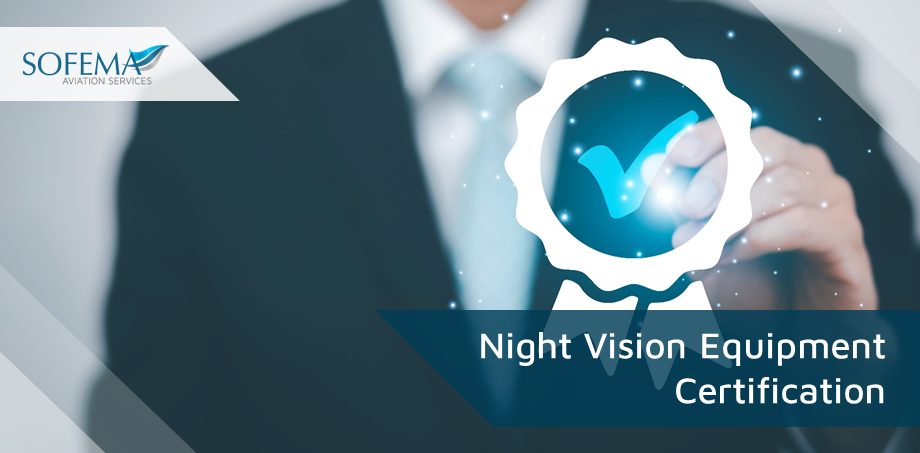Sofema Aviation Services (SAS) www.sassofia.com considers issues related to the use and operation of Night Vision Equipment in Aviation.
Introduction – Review of Questions Addressed by EASA
What are the expectations of the Agency with respect to Night Vision Imaging Systems (NVIS) competencies at a DOA holder?
- A detailed review of the DOA competencies related to NVIS will be performed during the investigation of the significant change.
- Besides the competencies required for the avionics and electrical changes, the DO has to demonstrate appropriate knowledge and experience in conducting the certification process as described in the appropriate sections of AC 29-2C MG16 or AC 27-1B MG16.
(Summary of AC 29 mg 16. certification procedure for rotorcraft Night Vision Imaging Systems (NVIS) lighting equipment).
(1) This guidance is designed to assist in the certification of NVIS internal and external aircraft lighting systems. It covers the two processes involved in NVIS lighting certification:
- 1. Installation and certification of the NVIS-compatible lighting on the aircraft.
- 2. Certification of the NVIS lighting installation and cockpit compatibility with night vision goggles (NVGs).
Expanded guidance is found in RICA/DO-275, Minimum Operational Standards for Night Vision Imaging Systems, dated 12 October 2001. Additionally, this guidance is meant for use with NVIS using night vision goggles and does not apply to other night or low visual environment enhancement devices (i.e., forward-looking infrared system (FLIR), enhanced vision system (EVS), etc.).
Do I need to take any action, having already ‘rotorcraft’ category and ‘Installation of Avionics’ and ‘Electrical systems’ in my Terms of Approval, to be able to design NVIS-related changes/repairs?
- The changes/repairs of NVIS or NVIS-friendly rotorcraft are specifically covered in the Terms of Approval by the ‘NVIS’ technical field. Therefore, to be able to design such changes/repairs, a DOA has to extend its scope of approval through the usual Significant Change process.
Why should I, as a DOA holder designing changes to rotorcraft, know about Night Vision Imaging Systems (NVIS)?
- In the last years, the use of night vision systems in civil operations increased, reflected in an increasing number of rotorcraft already equipped with the system or ‘NVIS-friendly’ (with provisions for installation of NVIS systems).
- Awareness of the NVIS technical field is expected from any DOA holder – so that it can assess if its design changes are (potentially) affecting the NVIS characteristics of the rotorcraft.
For DOA holders who design changes that are affecting NVIS, this technical field must be included in the Terms of Approval.
Classification of Changes – Non-NVIS-approved helicopters
- According to point 21.A.91, any modification that has an appreciable effect on the operational characteristics of the aircraft is a major change.
- In this context, changes to an aircraft from non-NVIS to NVIS-certified are considered to be major changes.
Note: Design changes needed to achieve NVIS certification are considered major changes as they affect functions whose failure could have a hazardous effect during NVIS operations.
For additional information please see the following document – EASA CM No.: CM-FT-001 Issue 03.
Next Steps
Sofema Aviation Services (SAS) and Sofema Online (SOL) provide EASA Regulatory Compliant and Vocational training including more than 20 courses specifically related to Part 21 / CS 25.
For details please see www.sassofia.com & www.sofemaonline.com or email team@sassofia.com
Tags:
Aircraft Certification, aviation, Avionics, DOA, EASA, Night Vision Equipment, Night Vision Imaging Systems (NVIS), Rotorcraft, SAS blogs, Sofema Aviation Services




